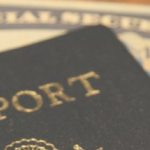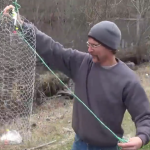Surviving a Plane Crash on a Canadian Glacier: Lessons for All of Us

An experienced 81 year old pilot and his student were flying in a remote area of British Columbia, Canada, when they safely crash landed their small plane on a glacier. The story is one of success and failure, making good and bad choices and a little bit of luck and good timing. It is also a reminder of how things can go from normal to a life-threatening situation in a matter of seconds. Let’s look more closely at the details of this event in order to see how having some common-sense and basic survival skills really do pay off.
Wrong Turn
The problem started when the pilot made a wrong turn. He was approaching an airport that was situated in a valley, but he turned down the wrong valley instead. Either he got disoriented, read the map wrong or the GPS was incorrect. In any case, it was this simple mistake that led to the crash.
Once the pilot realized his error, he tried to turn his plane around to get out of the valley and back on course. However, it was too narrow for the plane to make the turn, so all they could do was either climb out or fly straight ahead. Due to the weight of the passengers, the high altitude, weak propulsion and strong downdrafts, the plane didn’t have the power to climb. The pilot had to make a split-second decision to either ditch the plane on a soft patch of snow or attempt to climb over the end of the valley. He chose to ditch, and that act was credited for saving the lives of everyone on board.
Now What?

This is where the story gets really interesting. The emergency locator beacon on board the plane didn’t go off, and the pilot and passengers were out of cellphone range. Investigators think the beacon failed to transmit because of the soft landing. The survivors had two choices: Either stay with the plane and wait for rescue, or attempt to hike out of the glacier to get to civilization. They chose to hike out because they figured that it would take a couple of days before rescuers arrived.
This was probably a wise decision. The pilot published his route as well as his ETA at the destination airport. However, it would take time to piece together that information once air traffic controllers or family members realized that the plane didn’t make it. It would also take time for a rescue to be initiated and to arrive in the area.
The plan was to hike out of the valley by following a river. The pilot said he made this decision because he saw this strategy on a survival program. It makes perfect sense, since rivers almost always lead to civilization, and they are also the best places to find food, water and shelter in one place.
Smart Choices
Once they decided to leave the plane, they left a message for rescuers by writing on the fuselage. They described their plan, the direction they would be heading, and most importantly, when they headed out. This was done so rescuers could calculate their location more efficiently and target their search efforts.
The hike out of the valley was treacherous and time-consuming. The party decided to hunker down for the night and avoid risking getting lost or injured as daylight faded. They set up camp, using minimal resources and supplies near the river. The next morning, the passenger decided to take a log and use it to float down the river until he found a bridge, town or road. This was so that the other individual, whom was old and not in top physical condition, wouldn’t risk getting injured or lost.
Fortunately, the rescue helicopter located the party before this plan was set in motion. All passengers were airlifted to safety and none of them were injured during the entire episode.
Bad Choices
Despite the good decisions that everyone made in terms of thinking the situation through, there were some bad choices that led to this accident in the first place. First, the plane was too heavy and too under-powered to fly in those conditions. Second, the pilot misread the map or didn’t use enough situational awareness. Finally, there was no mention of a survival kit on board, but this is just speculation at this point.
It’s important to remember that good planning as well as not taking unnecessary risks can often avert problems from occurring in the first place. However, the real moral of this story is that everyone involved didn’t panic, thought things through, worked with what they had, and made wise choices during their ordeal. These are important characteristics of any survival situation, and we should learn from their actions because the proof is in the pudding: They got out alive.














